Your cart is currently empty!
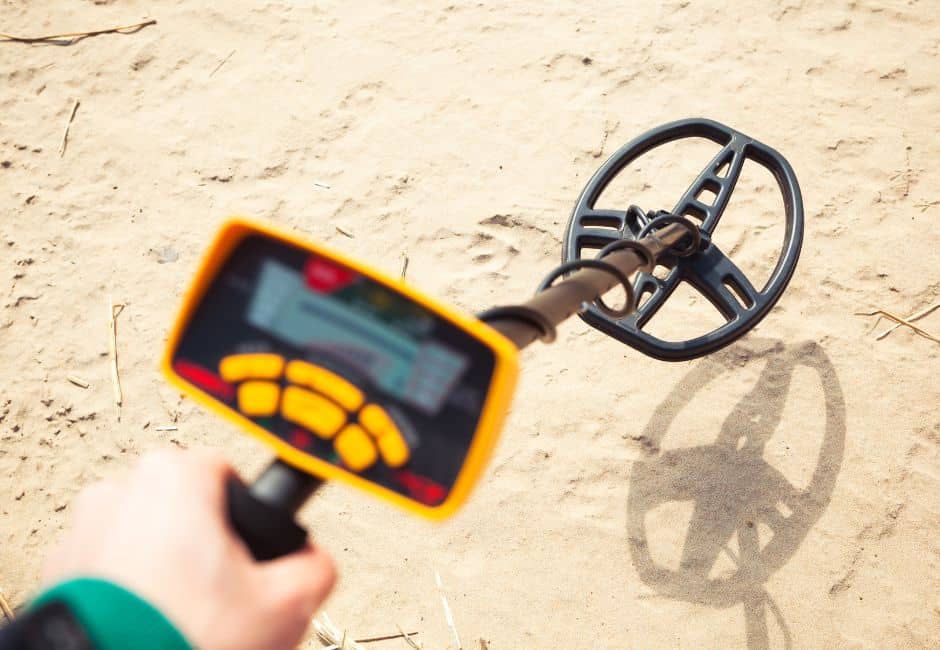
Metal Detector Adventures with Kids
If you’re looking for a fun and unique way to encourage your kids to get outside and explore (while also playing up the potential for finding hidden treasure), then you need to try metal detecting! A metal detector is a great tool for inspiring outdoor adventures and keeping your family busy and active in nature. It’s a fun hobby that’s full of excitement and could even be lucrative! Today, Hannah Martin, UK mom, and co-host of the YouTube show Hobie’s Nature Club is here with tips for using a metal detector with kids and how to create fun metal detector adventures for your children.
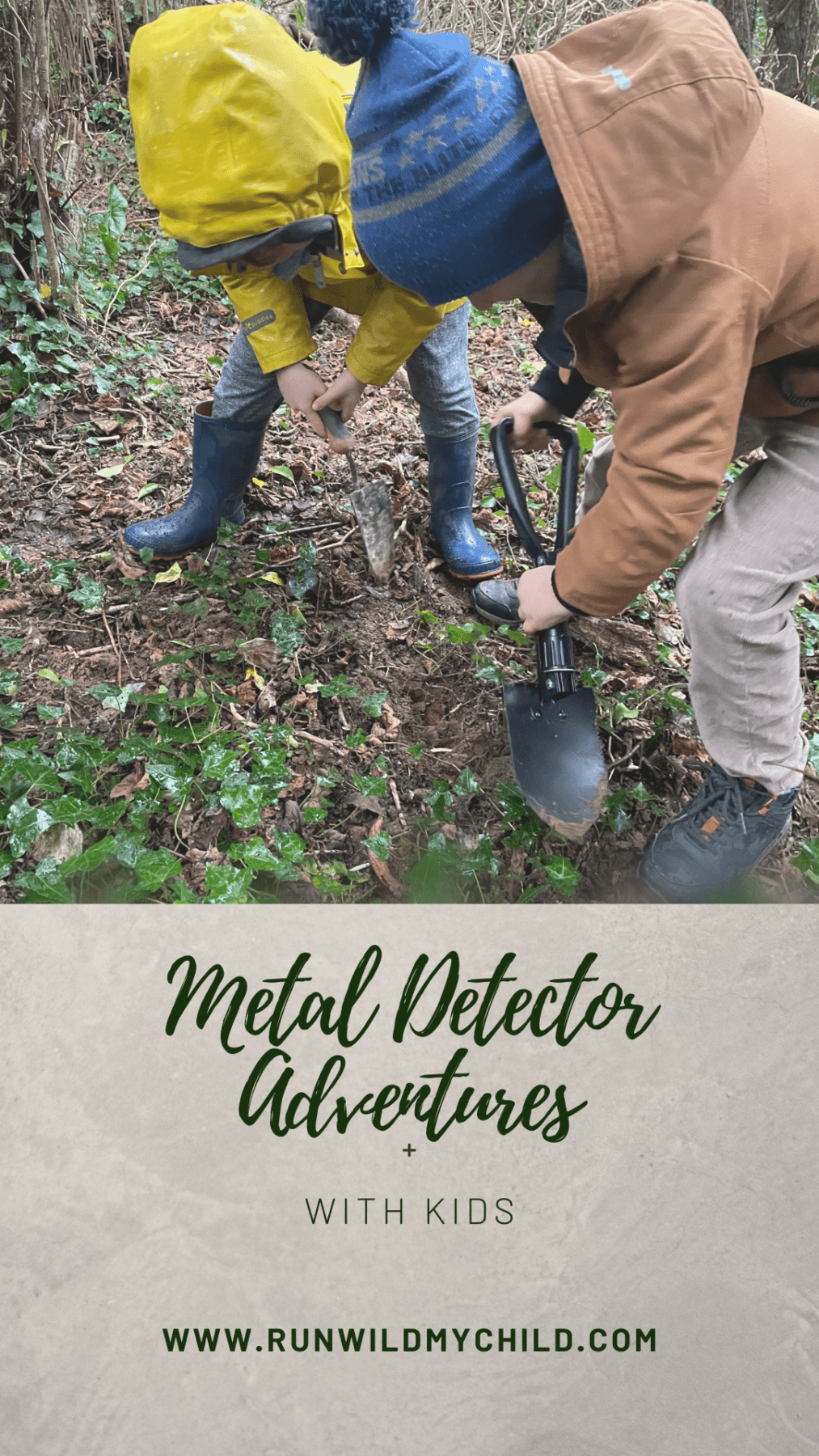
Metal detectors make great gifts for outdoorsy kids
Do you ever struggle to decide on what presents to get your kids for birthdays or Christmas? We had that exact dilemma this year with our son this past year. We love to play together, so open-ended toys that get us outside and keep us all active are best. This year we decided to get something that would not only encourage us to get outside, but provide us with an adventure as a family! That’s not an easy expectation, but we did it with the purchase of a metal detector.
Our metal detector has provided us with endless hours of exploration and adventure. We’ve used it for so many different things and in a variety of ways. This article will inform you about adventures you can have and activities you can do outdoors with a metal detector. These activities don’t just focus on finding lost treasures, but instead can be an educational and valuable experience for you and your family.
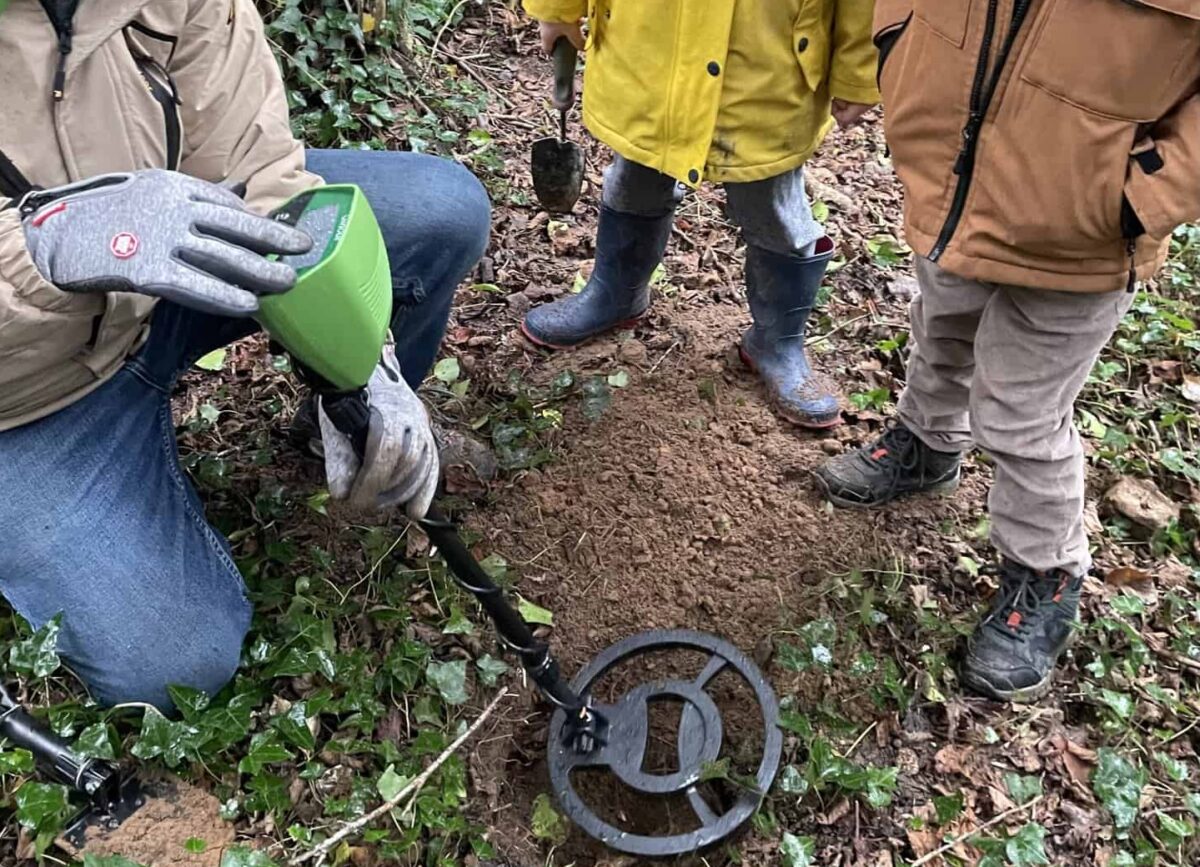
What to consider when purchasing a metal detector for kids
Like so many things these days, there is a wide array of choices online for various different models of metal detectors. I recommend you start by setting a budget on what you’d like to spend and then go online and read the reviews of metal detectors in your price range. Metal detectors can range in price from $30 to $1000. Metal detectors for kids are usually more affordable than the larger ones designed for adults, with all the bells and whistles.
In addition to price, you’ll also want to consider the weight of the metal detector. If your child will be using the metal detector, you’ll want it to be light enough for them to hold by themselves, but advanced and big enough for them to continue using into their teenage years. Due to us living by the coast and the second-largest harbor in the world, we also thought it would be good to have a waterproof model.
Other options that are available in metal detectors that affect the price are headphones, carrying case, shovels/trowels, touch-screens, extra batteries.
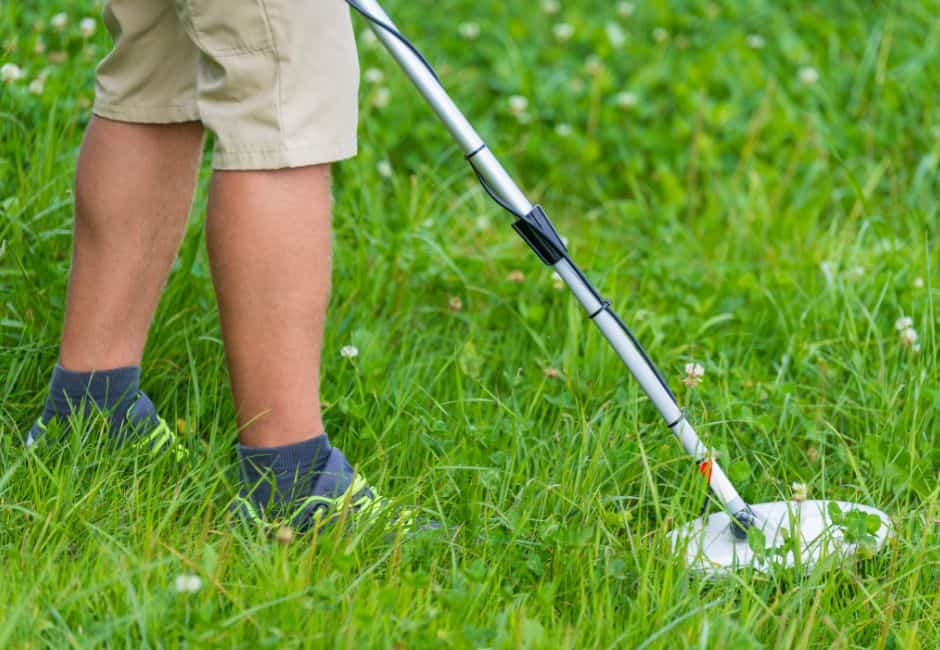
Best metal detectors for kids
Here are a few metal detectors we found online with very good reviews (and the one we ended up purchasing). Since we’re in the UK, I’ve included links to both Amazon UK shop and US options, as well.
Best budget-friendly metal detectors
Mid-range metal detectors
High-end metal detectors
- Nokta Makro Simplex (UK)
- Garrett ACE (US)
Where to use your metal detector?
There are an array of rules and regulations in regard to metal detecting, both in the UK and (from research) the US. Navigating complex laws and rules can be daunting and frustrating, but having to leave behind a great find would be even worse. Take the time before you explore to find out what legal jurisdiction an area falls under and what permissions you need to discover and recover items. I would hate for you to have your possessions ceased and for you to end up with a criminal record!
UK rules about metal detecting
Even though in the UK we have designated areas of public access, this does not mean that you have permission to metal detect or keep what you find. If you are unsure, the best thing to do is to ask permission from the land owner or council/state. In the UK, you need permission to detect on beaches, footpaths, or council-owned land. Any finds discovered will normally be the property of the landowner, so to avoid disputes, it is advisable to get permission and agreement in writing first regarding the ownership of any finds subsequently discovered. (www.finds.org)
US rules about metal detecting
In the US, laws vary from state to state, but all 50 allow metal detecting in some form on public property. Some Parks and Recreation departments maintain a list of sites that allow metal detecting without a permit. These spots include popular beaches, fields, and forested areas but exclude all protected archaeological sites. Pre-approved places are usually limited by additional criteria, such as parking lots, picnic areas, and trail surfaces only. Any detecting that happens outside these neatly drawn lines may require a permit. Ask the nearest park office about detecting possibilities and obtaining a permit. (www.seriousdetecting.com)

Tips for responsible use of a metal detector
No matter where you’re using your metal detector, it is crucial that you are both responsible and respectful. You should keep to the area’s code of conduct in regard to trespassing, anti-social behavior, and respecting nature. Here are some tips for using your metal detector responsibly:
- Educate yourself before you dig. Ignorance of the law is no excuse.
- Seek permission from the property owner if you’ll be using your metal detector on private property. Decide in advance (and get it in writing) about who gets to keep any valuable finds.
- Pack out what you pack in, and properly dispose of any trash you find.
- Leave all gates, structures, and personal property as they were before.
- Dig only where it’s legal and allowed by the rules and regulations in your area.
- Never dig in a way that harms vegetation, wildlife, or changes natural features.
- Report any significant historical artifacts to local authorities.
- Don’t leave behind a minefield of holes. Unfilled holes are unsightly, dangerous to people and livestock, and are detrimental to the continued use of detectors.

What else do you need to go metal detecting?
Like any other outdoor activity, you need to be prepared for your metal-detecting adventure with your kids. You’ll need to first consider the weather and ensure you are dressed appropriately. If it’s cold and rainy (like it is for us here in the UK), I recommend dressing the kids in waterproof jackets, pants, and shoes. Be sure to bring along a hat and gloves, as there is a fair bit of standing still when searching for treasure.
If you want to dig up your finds, you will need a good spade for digging. You’ll also need a bag to hold, carry and store your treasures (because they’ll be very dirty). And, as always, bring water and lots of snacks!
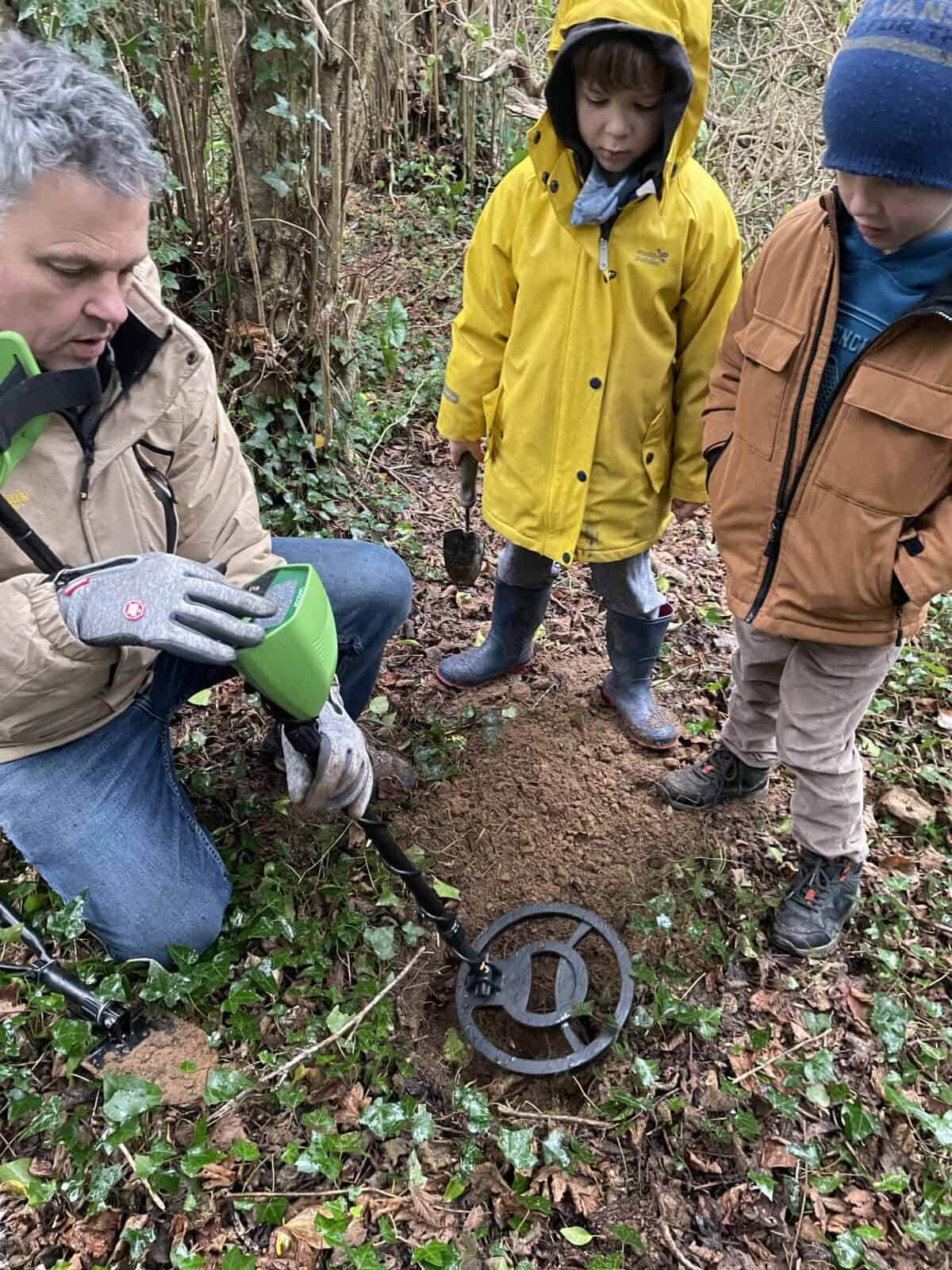

How to use a metal detector
Using a metal detector is easy, but your technique is key and could make all the difference between a successful outing and a bust. There is a difference between the type of detector you have and the type of soil you are detecting.
To use a metal detector:
- Adjust the stem of the metal detector so that the transmitter coil and receiver coil hover just above the ground when you hold the device.
- Move the machine slowly back and forth, from side to side while walking at a slow pace.
- When you hear an alarm or tone from the detector, stop and take a closer look at the area. You may have found something metal!
- If you raise the search coils during a sweep this could produce false readings. You should be able to adjust the settings on your detector to help weed out unwanted metals, like aluminum cans or foil (unless you want to find those!).
- Continue sweeping in smaller paths and then a circular motion to isolate the area after a target ID is revealed by a beep.
Things to keep in mind when using a metal detector with kids
Using a metal detector to find treasure sounds super exciting! But, be aware that you will initially dig into loads of trash and need help getting good finds with your backyard searches. But don’t worry or get discouraged. Through trial and error (and with a lot of patience), you will certainly get better at the game. Here are some useful tips for metal-detecting with kids:
- Be aware that you will probably discover a lot more trash than treasure (bring a trashbag and use this as a way to talk about cleaning up after yourselves outside)
- Get familiar with your metal detector and its settings. There are usually options for finding different types of metal and adjusting the sensitivity that will help aid in your discovery of real treasure (as opposed to trash).
- Use headphones to keep the beeping noise to a minimum for those around you. Headphones can make you more sensitive to the signal and drown out background noise.
- Try going metal detecting right after it rains. The wet ground has a stronger conductivity than dry ground, which enhances target and depth sensing. However, be prepared for lots of mud!
- Bring extra batteries! You never know when you’ll lose your charge and you wouldn’t want your adventure to end due to dead batteries.
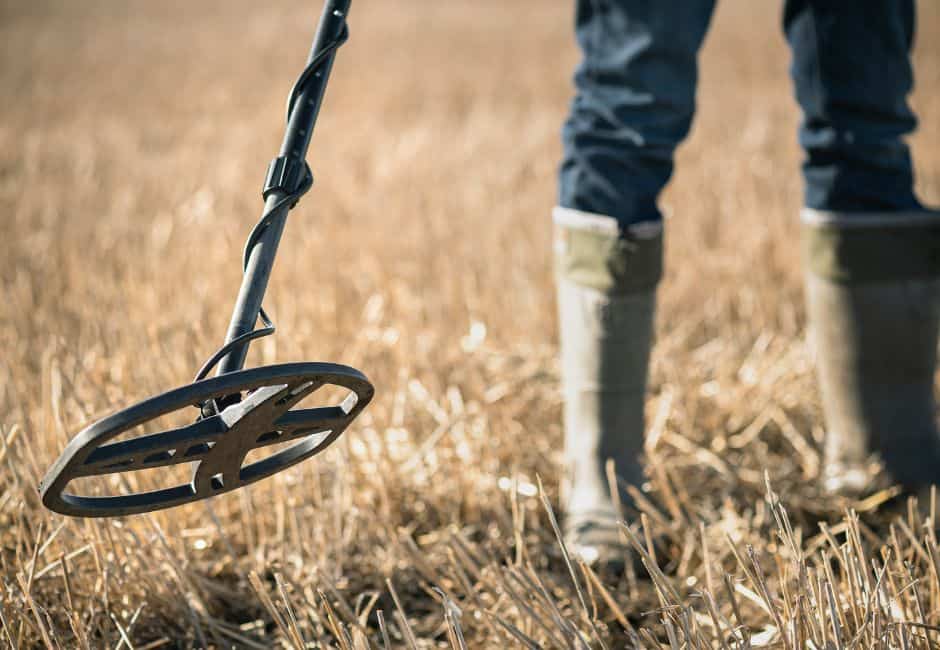
Kids’ activities using a metal detector
Backyard treasure hunt
If you aren’t keen to seek permission or worried about access, there are some fun activities you can do in your own backyard or garden that don’t involve digging up public property or other people’s land. One option is to create your own treasure map for your kids to find hidden tresure in your own backyard. You can make the map as simple or elaborate as you want. Be sure to use an X to mark the spot and bury your own metallic treasure (or put non-metal treasure in a metallic box). You could grid your map and give different coordinates for different buried treasures. For a bit more fun, you could all create your map together with ragged edges and teabag stains to make it look authentic!
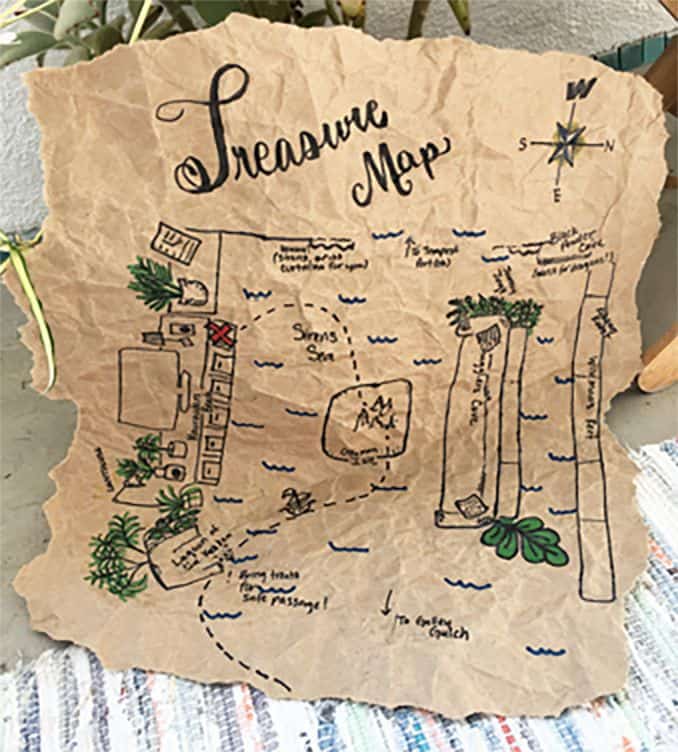
Metal detector orienteering
There is also the opportunity to teach map reading skills to kids when you use a metal detector. For example, you could print out a map of a local park where you’d like to try metal detecting. Use the map to identify places that might uncover some real treasure. Bring the map with you on your adventure and teach your children about orientating their map and using the key to identify landmarks. Let them choose a spot they would like to go to and use the map to navigate there.
Benefits of metal detecting for kids
Not only is metal detecting a good form of outdoor exercise (without even realizing it), but it’s also educational. As you find treasures, you can research your findings to learn more about the past and your discoveries. Our best metal-detecting discovery was a handful of shells from a World War II Meteor plane. This adventure was not only finding the treasure but learning about where the shells came from and why they were there. This lead to some really fascinating conversations about our area and its history.
Using a metal detector with kids also gets you outside into nature, usually in places that are undisturbed. Metal detecting promotes self-confidence as children get to make decisions themselves and make their own discoveries. It develops resilience and patience, as you are not always successful in finding things but may want to keep trying. It teaches children to respect the environment, and how you should leave the area as you found it; no litter, no holes left uncovered. Nature is all around you, which invokes interest, questioning, and great conversations.
We think metal detecting is a great outdoor activity that the whole family can enjoy. We really hope you feel inspired to give it a go! Get out there and find some treasure near where you live. If you do, please remember to share your experiences with @runwildmychild on Instagram, as we would love to see your finds!
Have your kids ever tried using a metal detector?
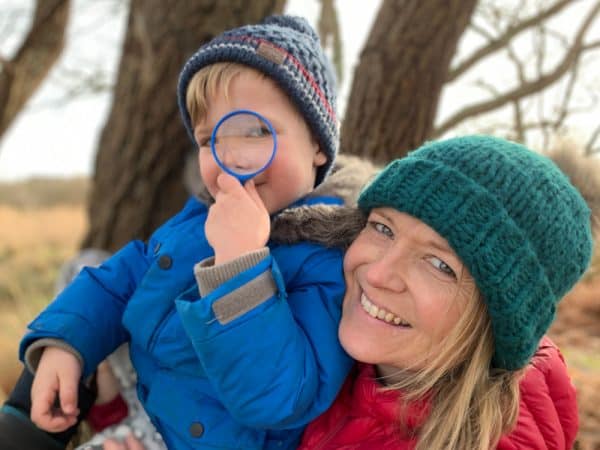
About the author
Hannah Martin has worked as a PE Teacher in the UK for 15 years. She has always loved being active outdoors. However, she discovered a new passion for nature and appreciating the environment when she had her son Hobie (now 5 years old). Hannah and Hobie’s vision is to inspire parents to spend time doing fun, creative, nature activities outdoors with their children; no matter where they live and whatever the weather. They believe spending time together outdoors as a family will encourage future generations to love and care for the world, wildlife, and environment.
Find more from Hannah (and Hobie) in the following locations:
Instagram: @hobies_nature_club
Website: hobiesnatureclub.co.uk
YouTube channel: Hobie’s Nature Club
RWMC Posts: Hannah Martin

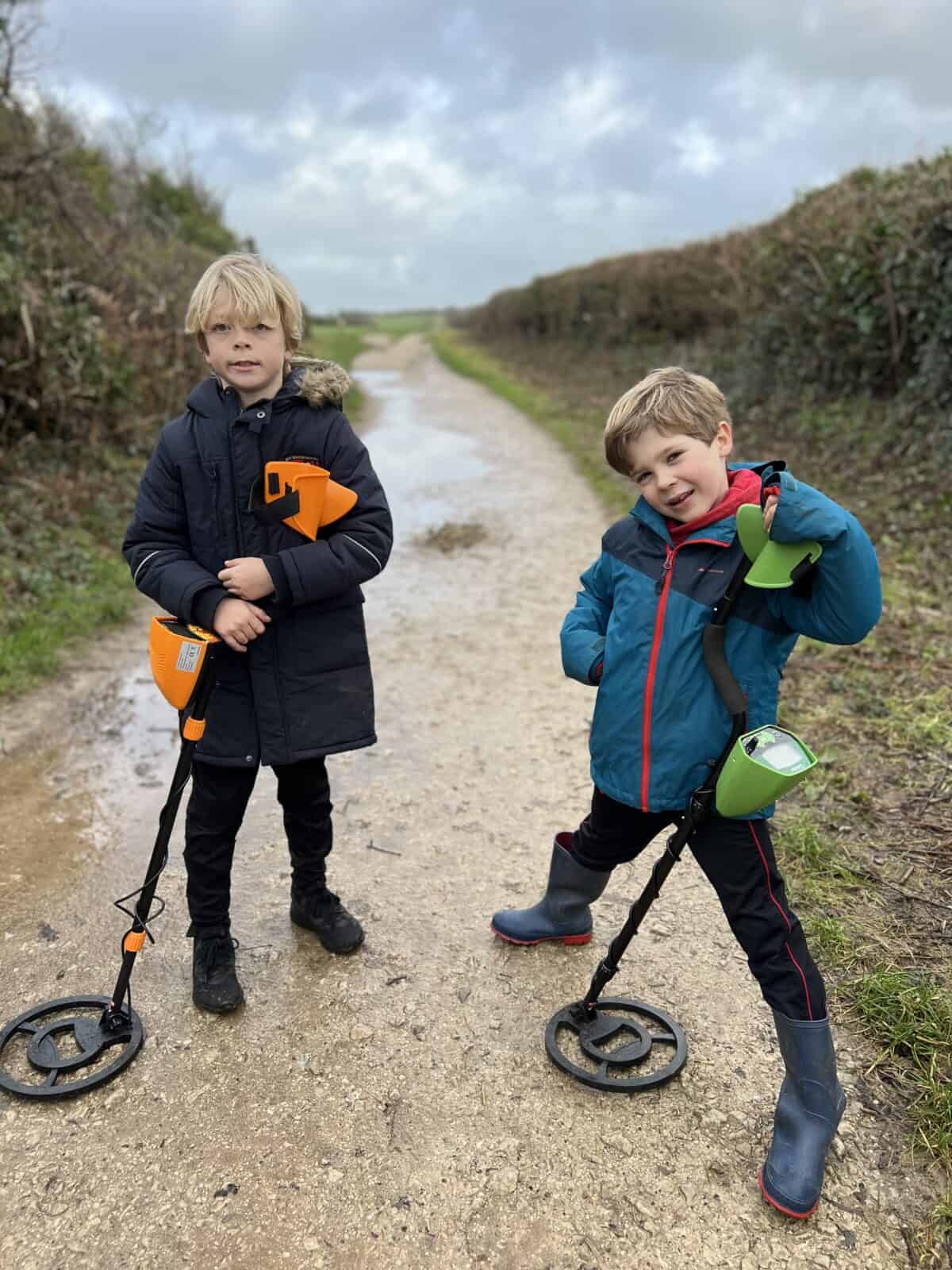
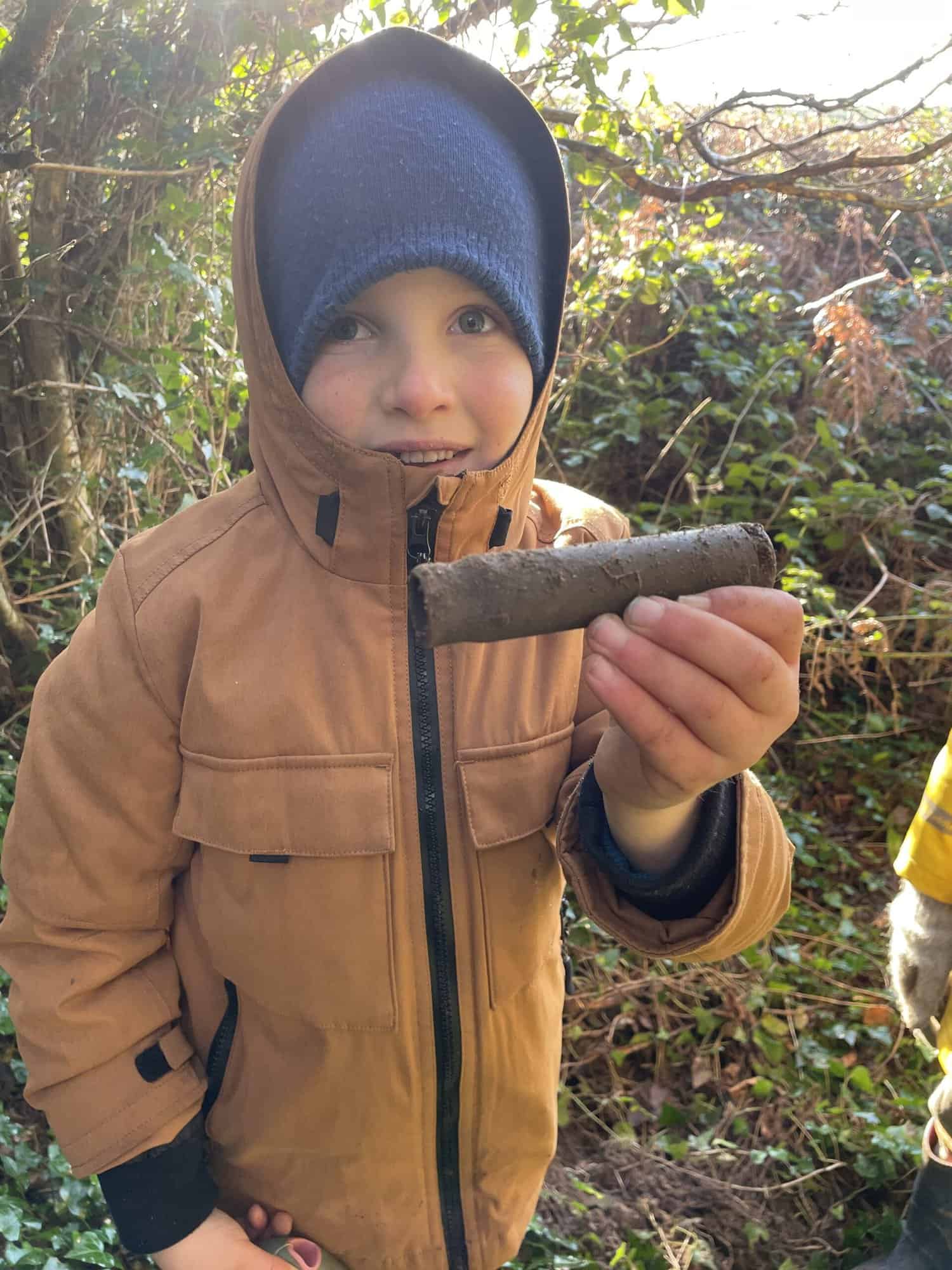
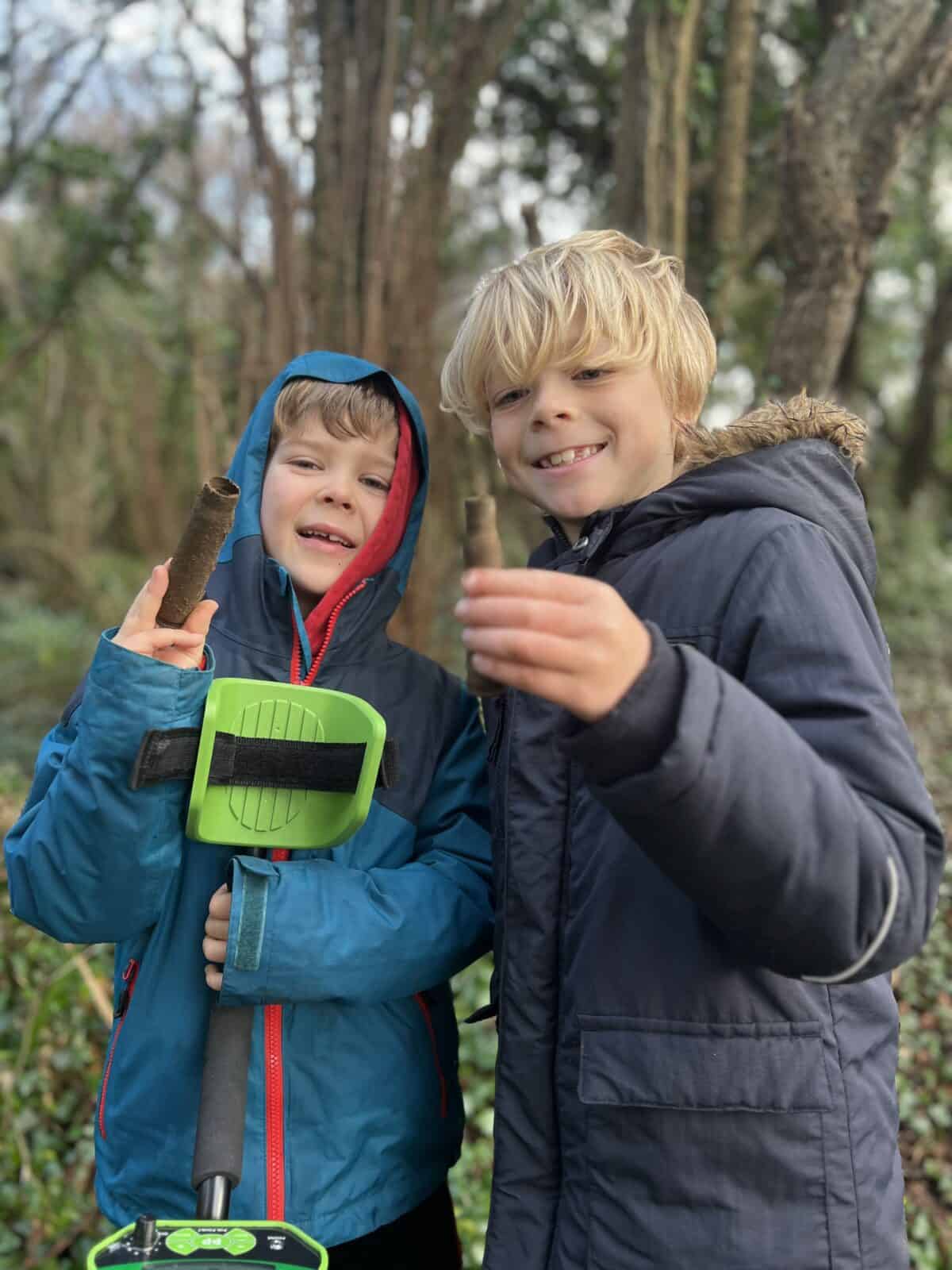
Leave a Reply